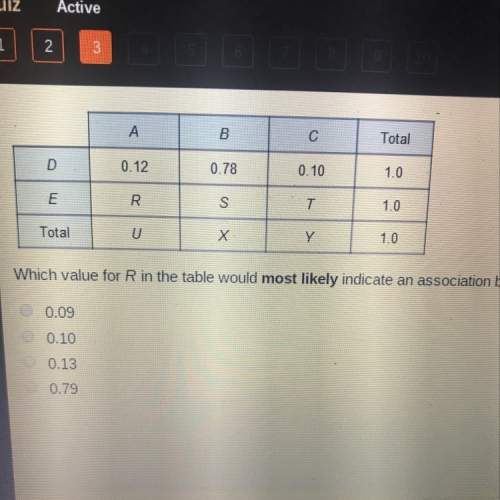1) Demuestre Si la proposición ¬ ( p Ʌ ¬ q Ʌ ¬ r) es falsa, entonces la proposición
p →...

Mathematics, 20.02.2020 08:29 austinmiller3030
1) Demuestre Si la proposición ¬ ( p Ʌ ¬ q Ʌ ¬ r) es falsa, entonces la proposición
p → ( q Ʌ r ) es:
a) Verdadera b) Falsa
2) Identifique cuál de las siguientes formas proposicionales NO es tautológica.
a) (p v q ) → (¬p →q)
b) [ (p → r ) Ʌ ( q → r ) ] → [ ( p v q ) → r ]
c) [ ( p v q ) Ʌ ¬p ] → q
d) [ ( ¬q → ¬p ) ] → ¬q
e) [(p → q ) Ʌ ( q → r )] → (p → r )
AYUDAAA, HELP MI PLS.
Muchas gracias de antemano!

Answers: 1
Another question on Mathematics

Mathematics, 21.06.2019 16:20
Which math sentence can be used to determine if the triangle is a right triangle?
Answers: 1

Mathematics, 21.06.2019 17:30
Aplot of land is shaped like a quadrilateral. fences are built on the diagonal to divide the area into 4 sections. what is vi to the nearest tenth? gv = 6.55fv = 5.84vh = 3.27vi = ?
Answers: 1

Mathematics, 21.06.2019 17:30
What is not true about kl and mn? what is mn? (show your work)
Answers: 1

Mathematics, 21.06.2019 17:30
Thelime contains the point(-3,0) and parallel x-3y=3( show all work)
Answers: 3
You know the right answer?
Questions






English, 02.04.2022 14:00



Mathematics, 02.04.2022 14:00

Computers and Technology, 02.04.2022 14:00





English, 02.04.2022 14:00

Mathematics, 02.04.2022 14:00


English, 02.04.2022 14:00

Mathematics, 02.04.2022 14:00




